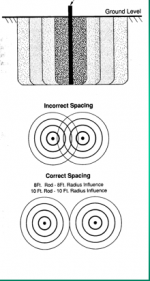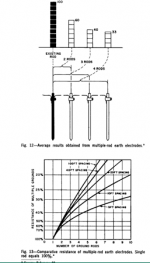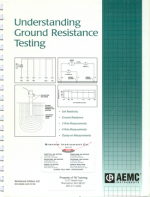The Seattle electrical code modifies the NEC to require the rod spacing be at least 8 feet. They provide an informational note:
Informational Note: The paralleling efficiency of rods
is increased by spacing them twice the length of the
longest rod.
Just running a simple thought experiment rather than a detailed calculation:
Clearly two rods installed parallel and touching each other will not improve on the performance of a single rod, except for a possible interface resistance at the surface of the rod.
And two ground rods an (approximately) infinite distance apart will not interact at all and the resistance will be that of two resistors on parallel.
So the question is where in between to draw the line. The only distance we have on which to scale the answer is the length of the rods, so one rod length apart is reasonable starting point.
Given the tension between effectiveness and practical spacing, that is not a bad arbitrary value to set in the rules.





